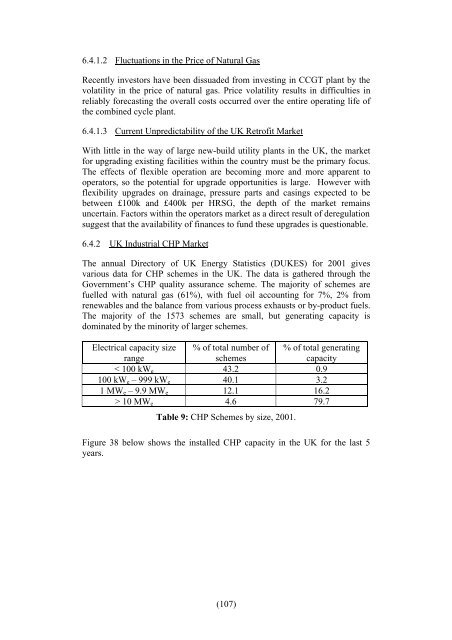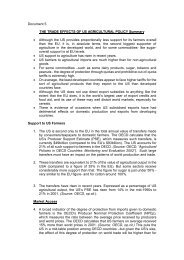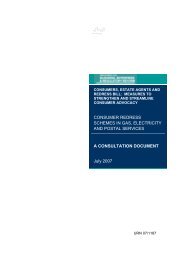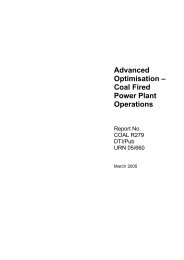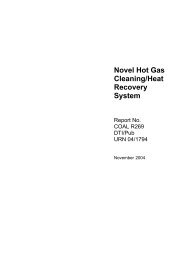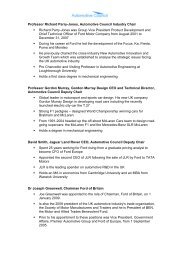(70) Therefore, the risk of sulphuric acid dew point attack ... - DTI Home
(70) Therefore, the risk of sulphuric acid dew point attack ... - DTI Home
(70) Therefore, the risk of sulphuric acid dew point attack ... - DTI Home
Create successful ePaper yourself
Turn your PDF publications into a flip-book with our unique Google optimized e-Paper software.
6.4.1.2 Fluctuations in <strong>the</strong> Price <strong>of</strong> Natural Gas<br />
Recently investors have been dissuaded from investing in CCGT plant by <strong>the</strong><br />
volatility in <strong>the</strong> price <strong>of</strong> natural gas. Price volatility results in difficulties in<br />
reliably forecasting <strong>the</strong> overall costs occurred over <strong>the</strong> entire operating life <strong>of</strong><br />
<strong>the</strong> combined cycle plant.<br />
6.4.1.3 Current Unpredictability <strong>of</strong> <strong>the</strong> UK Retr<strong>of</strong>it Market<br />
With little in <strong>the</strong> way <strong>of</strong> large new-build utility plants in <strong>the</strong> UK, <strong>the</strong> market<br />
for upgrading existing facilities within <strong>the</strong> country must be <strong>the</strong> primary focus.<br />
The effects <strong>of</strong> flexible operation are becoming more and more apparent to<br />
operators, so <strong>the</strong> potential for upgrade opportunities is large. However with<br />
flexibility upgrades on drainage, pressure parts and casings expected to be<br />
between £100k and £400k per HRSG, <strong>the</strong> depth <strong>of</strong> <strong>the</strong> market remains<br />
uncertain. Factors within <strong>the</strong> operators market as a direct result <strong>of</strong> deregulation<br />
suggest that <strong>the</strong> availability <strong>of</strong> finances to fund <strong>the</strong>se upgrades is questionable.<br />
6.4.2 UK Industrial CHP Market<br />
The annual Directory <strong>of</strong> UK Energy Statistics (DUKES) for 2001 gives<br />
various data for CHP schemes in <strong>the</strong> UK. The data is ga<strong>the</strong>red through <strong>the</strong><br />
Government’s CHP quality assurance scheme. The majority <strong>of</strong> schemes are<br />
fuelled with natural gas (61%), with fuel oil accounting for 7%, 2% from<br />
renewables and <strong>the</strong> balance from various process exhausts or by-product fuels.<br />
The majority <strong>of</strong> <strong>the</strong> 1573 schemes are small, but generating capacity is<br />
dominated by <strong>the</strong> minority <strong>of</strong> larger schemes.<br />
Electrical capacity size % <strong>of</strong> total number <strong>of</strong> % <strong>of</strong> total generating<br />
range<br />
schemes<br />
capacity<br />
< 100 kWe 43.2 0.9<br />
100 kWe – 999 kWe 40.1 3.2<br />
1 MWe – 9.9 MWe 12.1 16.2<br />
> 10 MWe 4.6 79.7<br />
Table 9: CHP Schemes by size, 2001.<br />
Figure 38 below shows <strong>the</strong> installed CHP capacity in <strong>the</strong> UK for <strong>the</strong> last 5<br />
years.<br />
(107)


